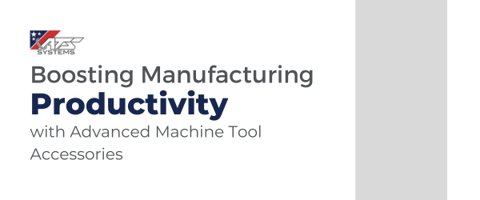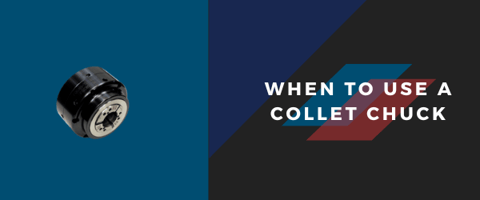In today's highly competitive manufacturing industry, achieving higher productivity and...
Upgrade Your Machine Shop Production Using Your Existing CNC Machines
Upgrading your machine shop doesn’t always require purchasing brand-new CNC machines. In fact, with the right approach, you can improve efficiency, increase production speeds, and optimize precision without a hefty investment in new machines. Below are some key strategies to update your shop’s existing machines enhancing your overall workflow.
Maximize Precision and Flexibility with Rotary Tables
Rotary tables are a powerful way to expand the capabilities of your existing CNC machines. These devices allow for multi-axis machining enabling more complex part geometries and improved efficiency in operations such as milling, drilling, and engraving. By adding a rotary table, you can:
- Increase Part Complexity: Perform multi-sided machining on a single setup, reducing part handling time and improving accuracy.
- Enhance Flexibility: A rotary table makes it easy to switch between operations, reducing the time spent on retooling or changing setups.
- Enhanced Precision: Achieve intricate shapes and complex geometries with ease. Rotary tables allow for multi-axis machining, ensuring every detail is perfect, which is especially important in industries like aerospace and medical devices.
- Increased Efficiency: Reduce setup time and minimize manual labor. With rotary tables, you can handle multiple operations in a single setup, streamlining your workflow.
- Versatility: Whether you're machining parts for aerospace, automotive, or custom projects, rotary tables are adaptable for a wide range of applications.
- Improved Surface Finish: Get superior surface finishes on your workpieces. The continuous rotation helps in achieving uniformity and high-quality results.
- Competitive Edge: Stand out in the market! Advanced technology like rotary tables can elevate your capabilities and attract new clients.
Integrating a rotary table into your workflow provides a substantial boost in capability without the need to replace your machines, allowing you to tackle a wider range of jobs efficiently.
- Automating Processes with Bar Feeds and Robotics
Automation is a key factor in increasing production capacity, and you don’t always need an entirely new machine to achieve this. Bar feeders and robotic arms can be integrated into your existing machine tools to significantly improve throughput.
- Bar Feeds: These systems allow you to automate the loading and unloading of stock material, reducing manual labor and increasing machining time. With a bar feeder, you can set up your CNC lathe to run unattended for longer periods, making it possible to increase production while reducing human error.
- Robotic Automation: Integrating a robotic arm can provide additional flexibility and efficiency, handling everything from material loading and unloading to part inspection and packaging. Robotic systems can be programmed to handle a variety of tasks, which maximizes uptime and reduces reliance on manual labor.
Both of these automation solutions not only reduce downtime but also increase the consistency of your production processes, improving quality control and scalability without needing to replace existing machines.
- Upgrade Your Workholding
Workholding is critical to any machine shop operation, and upgrading your workholding system can significantly impact your production speed and accuracy.
- Air Chucks: These are an excellent option for shops looking to reduce setup time and improve clamping force. Air chucks operate with compressed air to provide a stronger, more consistent clamping force than traditional manual chucks. They are especially useful for delicate or high-precision parts where an even grip is essential. The ability to switch parts quickly and securely makes air chucks a valuable addition to your workholding systems.
- Quick-Change Collet Chucks: If you frequently change tooling or workpieces, a quick-change collet chuck system is a great upgrade. These systems reduce setup time by allowing operators to quickly and easily swap out tools and parts without the need for retooling or recalibrating the machine. This reduction in changeover time translates to greater efficiency and throughput.
- Steady Rest: A steady rest is a valuable addition to your existing CNC machinery, particularly for turning operations, and it can significantly enhance the precision, efficiency, and versatility of your shop allowing for larger parts production. When turning overhanging or cantilevered parts, a steady rest is indispensable. Without it, the unsupported end of the part can vibrate or deflect during machining, which can lead to inaccuracies and tool damage. With a steady rest, the unsupported end of the workpiece is stabilized, ensuring better performance and higher quality machining, especially for parts with extreme overhangs.
- Integrating High-Pressure Cooling Systems for Faster Feeds and Speeds
One of the simplest and most effective ways to enhance the performance of your existing machines is by integrating high-pressure cooling systems. These systems deliver a focused stream of coolant directly to the cutting tool, improving tool life and enabling faster cutting speeds. The advantages of high-pressure cooling include:
- Increased Cutting Speeds and Feeds: High-pressure cooling helps to remove heat from the cutting zone more effectively, which allows you to increase cutting speeds and feeds without worrying about tool wear or material distortion.
- Improved Tool Life: By keeping the cutting tool cooler, high-pressure cooling systems reduce tool wear, which translates to longer tool life and lower overall tool costs.
- Better Surface Finish: The enhanced cooling ensures that chips are efficiently removed from the workpiece, which can result in smoother surface finishes and better overall part quality.
The addition of high-pressure cooling is a cost-effective way to improve production speed and part quality, all while maximizing the use of your existing machinery.
- Improving Shop Workflow and Efficiency
Beyond equipment upgrades, improving the overall workflow of your shop can make a significant difference in productivity. Here are some ways to streamline operations:
- Tool Management Systems: Implementing a tool management system helps keep track of tools and their conditions, ensuring that you're always using the right tool for the job and reducing downtime spent searching for or replacing tools.
- Lean Manufacturing Practices: Implementing lean practices like 5S (Sort, Set in order, Shine, Standardize, Sustain) can help reduce waste, increase organization, and make your shop more efficient.
Even small changes to improve workflow can have a substantial impact on your shop’s bottom line.
Conclusion
Updating your machine shop doesn't have to mean investing in new, expensive machines. With the right upgrades, such as adding rotary tables, automating processes with bar feeds and robotics, upgrading workholding, and integrating high-pressure cooling, you can significantly improve your shop's efficiency, precision, and throughput. These improvements help to keep your shop competitive and capable of handling more complex jobs without the financial burden of purchasing new equipment. By making smart investments in these areas, you can enhance production and stay ahead in a fast-paced manufacturing environment.
.png)



